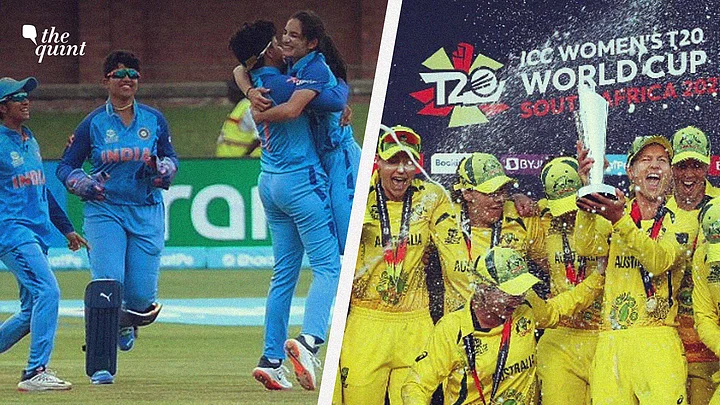afwome“We don't get tired of it,” said Beth Mooney, a couple of hours after playing a match-winning knock. An innings, which helped her team, Australia, win their sixth ICC Women’s T20 World Cup title.
Albeit, it will be a blatant misapprehension to claim Australia won the title owing solitarily to Mooney’s knock. Such is the quality of the team, with their calibre being head and shoulders above everyone else in women’s cricket, that finding match-winners from the side is as easy a task as predicting the favourites for any given competition in women's cricket.
Chaperoned by skipper Meg Lanning, as the Australians lifted the silverware, the aura around Newlands was that of ‘business as usual.’ Not humdrum and banal, by any means, but certainly not evoking the rapturous ecstasy that would have been on exhibition, had South Africa been victorious.
The Proteas did well to shake off all gratuitous tags to make it to the final, for the first time in their history. Barring them, India also did a fairly decent job, of not only qualifying for the semi-finals, but giving the Aussies a run for their money.
Whilst the combined efforts of every challenger proved to be inadequate, what seems to be evident is that the teams, albeit not as rapidly as their fans would want them to, are indeed closing the gap.
Eras End, But Onus Is on India to Close the Gap
It is not entirely rare for the game to have extraordinarily dominant teams, but be it for the West Indies from the 1970s or the Australian men’s team from the late 1990s to early 2000s, the emergence of a nemesis on the horizon has always been inevitable.
Perhaps, more than anyone else, Australia comprehend the situation perfectly, as Mooney said after the game “We want to continue winning as many as there is out there. we know that we're being hunted, people are looking at us for what we do, and how we go about it, so certainly, it won't last forever.”
With Australia trying to win as many trophies as they can till their era of dominance lasts, the onus is now on burgeoning teams, like India, to close the gap rapidly.
A Day Late, but Not a Dollar Short
The Women's Big Bash League (WBBL) succeeded the Australian Women’s T20 Cup, which in itself, had a fairly robust framework as the nation’s pinnacle domestic T20 league in women’s cricket. The new competition, however, opened avenues and opportunities in an unparalleled, and unprecedented manner.
WBBL has been successful in attracting the most renowned talents across the globe, including Indians like Harmanpreet Kaur, Jemimah Rodrigues and Smriti Mandhana.
Barring the usual cut-throat competition, the format also ensures that each team plays a minimum of 14 matches. In a direct comparison, the minimum number of matches a team plays in India’s premier domestic T20 competition, the Women’s Senior T20 Trophy, is restricted to only five.
The emergence of WPL will only hone the game-management skills of the Indian talents, an aspect often found wanting in the team during knockout fixtures, whereas a gradual expansion of the competition could be beneficial.
How Australia Went ‘Dutch'
In terms of the financial aspect of the game, Indians’ dominance in men’s cricket is comprehensively documented. Here, however, Australia walks the talk.
While the Board of Control for Cricket in India (BCCI) deserve their due share of credit for adopting gender-neutral pay parity, that is, equal match fee for male and female cricketers, it has not had any effect on the annual retainers.
Grade A players from India receive the highest annual salary of Rs 50 lakh, whilst the maximum retainer for Australian players is approximately Rs 95 lakh.
Besides that, Cricket Australia (CA) also pays a daily tour fee of approximately Rs 14 thousand to every cricketer whilst on tour, whereas the revamped revenue share model, which came into existence not very long ago, was seen as pioneering.
The model requires CA to distribute 30% of its annual revenue among the players, and whilst there is no established link between remuneration and performance in any sport, this step garnered praises from many Aussie cricketers.
Financially Rewarding Domestic System
Moreover, barring WBBL, Australia’s domestic 50-over competition, the Women’s National Cricket League is also comparatively much more financially rewarding than its Indian counterpart – the Women’s Senior One Day Trophy.
A player competing in both WBBL and WNCL is liable for remuneration of approximately Rs 48 lakh – almost the same as India’s highest retainer, and that too, whilst not playing any international matches.
Amid the shortcomings, however, it is only right to mention that Australia has had a bounteous head-start in this format, and the likes of India are only playing a game of catch-up. With the introduction of WPL, and should necessary steps be implemented effectively, catching up is unlikely to be a process long drawn out.
(At The Quint, we question everything. Play an active role in shaping our journalism by becoming a member today.)
